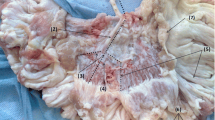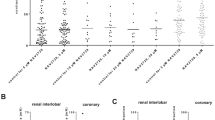Abstract
Low-threshold concentrations of diadenosine polyphosphates (ApnA: Ap3A, Ap4A, Ap5A, Ap6A) or ATP, which at basal vessel tone induce just measurable vasoconstrictions, induce up to ten times enhanced vasoconstrictions of previously relaxed (by acetylcholine or sodium nitroprusside or 8Br2 cGMP or isoproterenol or levcromakalim) pre-contracted rat mesenteric resistance arteries (MrA) in a microvessel–myograph. These enhanced vasoconstrictions were of similar magnitude for threshold concentrations of all ApnA.
Possibly, the low concentrations of ApnA reverse the prior vasorelaxation by inhibiting a common vasorelaxation pathway, but obviously this is not due to inhibition of guanylate cyclase, which has been previously described to be inhibited by ApnA, because the enhanced vasoconstrictions can be observed with guanylate cyclase-independent vasorelaxants (8Br2 cGMP, isoproterenol or levcromakalim), too. The enhanced vasoconstrictions are endothelium-independent because after mechanical vascular de-endothelialization the results were identical. De-endothelialized vessels, which fail to relax by acetylcholine, showed no enhanced ApnA-induced vasoconstrictions, demonstrating that the mere prior vasorelaxation of the vessel is required to provide the enhanced vasoconstriction by ApnA. Furthermore, the enhanced contractility is not based on a potentiation of the phenylephrine contraction because it equally occurs with other agents used for arterial pre-contraction. Systemically applied ApnA considerably decrease arteriovascular resistance, resulting in hypotension. But here it is demonstrated that a preceding vasorelaxation enables the resistance arteries to generate a strong and persistent ApnA-induced vasoconstriction. Thus, in vivo at very low concentrations ApnA may serve to counteract severe conditions of hypotension (e.g., shock syndrome or anaphylaxis) by the constriction of resistance arteries.



Similar content being viewed by others
References
Castillo CJ, Moro MA, Del Valle M, Sillero A, Garcia AG, Sillero MA (1992) Diadenosine tetraphosphate is co-released with ATP and catecholamines from bovine adrenal medulla. J Neurochem 59:723–732
De Mey JGR, Brutsaert DL (1984) Mechanical properties of resting and active isolated coronary arteries. Circ Res 55:1–9
Flodgaard H, Klenow H (1982) Abundant amounts of diadenosine 5′,5‴-P1,P4-tetraphosphate are present and releasable, but metabolically inactive, in human platelets. Biochem J 208:737–742
Gu JG, Geiger JD (1994) Effects of diadenosine polyphosphates on sodium nitroprusside-induced soluble guanylate cyclase activity in rat cerebellum. Neurosci Lett 169:185–187
Jankowski J, Jankowski V, Laufer U, van der Giet M, Henning L, Tepel M, Zidek W, Schlüter H (2003) Identification and quantification of diadenosine polyphosphate concentrations in human plasma. Arterioscler Thromb Vasc Biol 23:1231–1238
Khattab M, Hohage H, Hollah PE, Rahn KH, Schlatter E (1998) Effects on diadenosine polyphosphates on systemic and regional hemodynamics in anesthetized rats. Kidney Blood Press Res 21:42–49
Kikuta Y, Ohiwa E, Okada K, Watanabe A, Haruki S (1999) Clinical application of diadenosine tetraphosphate (Ap4A:F-1500) for controlled hypotension. Acta Anaesthesiol Scand 43:82–86
Lüthje J, Ogilvie A (1983) The presence of diadenosine 5′,5‴-P1,P3-triphosphate (Ap3A) in human platelets. Biochem Biophys Res Commun 115:253–260
Lüthje J, Ogilvie A (1988) Catabolism of Ap4A and Ap3A in whole blood. The dinucleotides are long-lived signal molecules in the blood ending up as intracellular ATP in the erythrocytes. Eur J Biochem 173:241–245
Mulvany MJ, Aalkjaer C (1990) Structure and function of small arteries. Physiol Rev 70:921–961
Osol G, Cipolla M, Knutson S (1989) A new method for mechanically denuding the endothelium of small (50–150 μm) arteries with a human hair. Blood Vessels 26:320–324
Ralevic V, Burnstock G (1990) Postjunctional synergism of noradrenaline and adenosine 5′-triphosphate in the mesenteric arterial bed of the rat. Eur J Pharmacol 175:291–299
Ralevic V, Hoyle CH, Burnstock G (1995) Pivotal role of phosphate chain length in vasoconstrictor versus vasodilator actions of adenine dinucleotides in rat mesenteric arteries. J Physiol 483:703–713
Rapaport E, Zamecnik PC (1976) Presence of diadenosine 5′,5‴-P1, P4-tetraphosphate (Ap4A) in mammalian cells in levels varying widely with proliferative activity of the tissue: a possible positive “pleiotypic activator”. Proc Natl Acad Sci USA 73:3984–3988
Schlüter H, Offers E, Bruggemann G, van der Giet M, Tepel M, Nordhoff E, Karas M, Spieker C, Witzel H, Zidek W (1994) Diadenosine phosphates and the physiological control of blood pressure. Nature 367:186–188
Sillero MA, Del Valle M, Zaera E, Michelena P, Garcia AG, Sillero A (1994) Diadenosine 5′,5″-P1,P4-tetraphosphate (Ap4A), ATP and catecholamine content in bovine adrenal medulla, chromaffin granules and chromaffin cells. Biochimie 76:404–409
Steinmetz M, Schlatter E, Boudier HA, Rahn KH, De Mey JG (2000a) Diadenosine polyphosphates cause contraction and relaxation in isolated rat resistance arteries. J Pharmacol Exp Ther 294:1175–1181
Steinmetz M, van Le T, Hollah P, Gabriels G, Hohage H, Rahn KH, Schlatter E (2000b) Influence of purinoceptor antagonism on diadenosine pentaphosphate-induced hypotension in anesthetized rats. J Pharmacol Exp Ther 294:963–968
Steinmetz M, Janssen AK, Pelster F, Rahn KH, Schlatter E (2002) Vasoactivity of diadenosine polyphosphates in human small mesenteric resistance arteries. J Pharmacol Exp Ther 302:787–794
Steinmetz M, Gabriels G, van Le T, Piechota HJ, Rahn KH, Schlatter E (2003) Vasoactivity of diadenosine polyphosphates in human small renal resistance arteries. Nephrol Dial Transplant 18:2496–2504
Van der Giet M, Khattab M, Borgel J, Schlüter H, Zidek W (1997) Differential effects of diadenosine phosphates on purinoceptors in the rat isolated perfused kidney. Br J Pharmacol 120:1453–1460
Author information
Authors and Affiliations
Corresponding author
Rights and permissions
About this article
Cite this article
Steinmetz, M., Van Le, T., Bierer, S. et al. Prior vasorelaxation enhances diadenosine polyphosphate-induced contractility of rat mesenteric resistance arteries. Naunyn Schmied Arch Pharmacol 371, 359–363 (2005). https://doi.org/10.1007/s00210-005-1059-1
Received:
Accepted:
Published:
Issue Date:
DOI: https://doi.org/10.1007/s00210-005-1059-1




